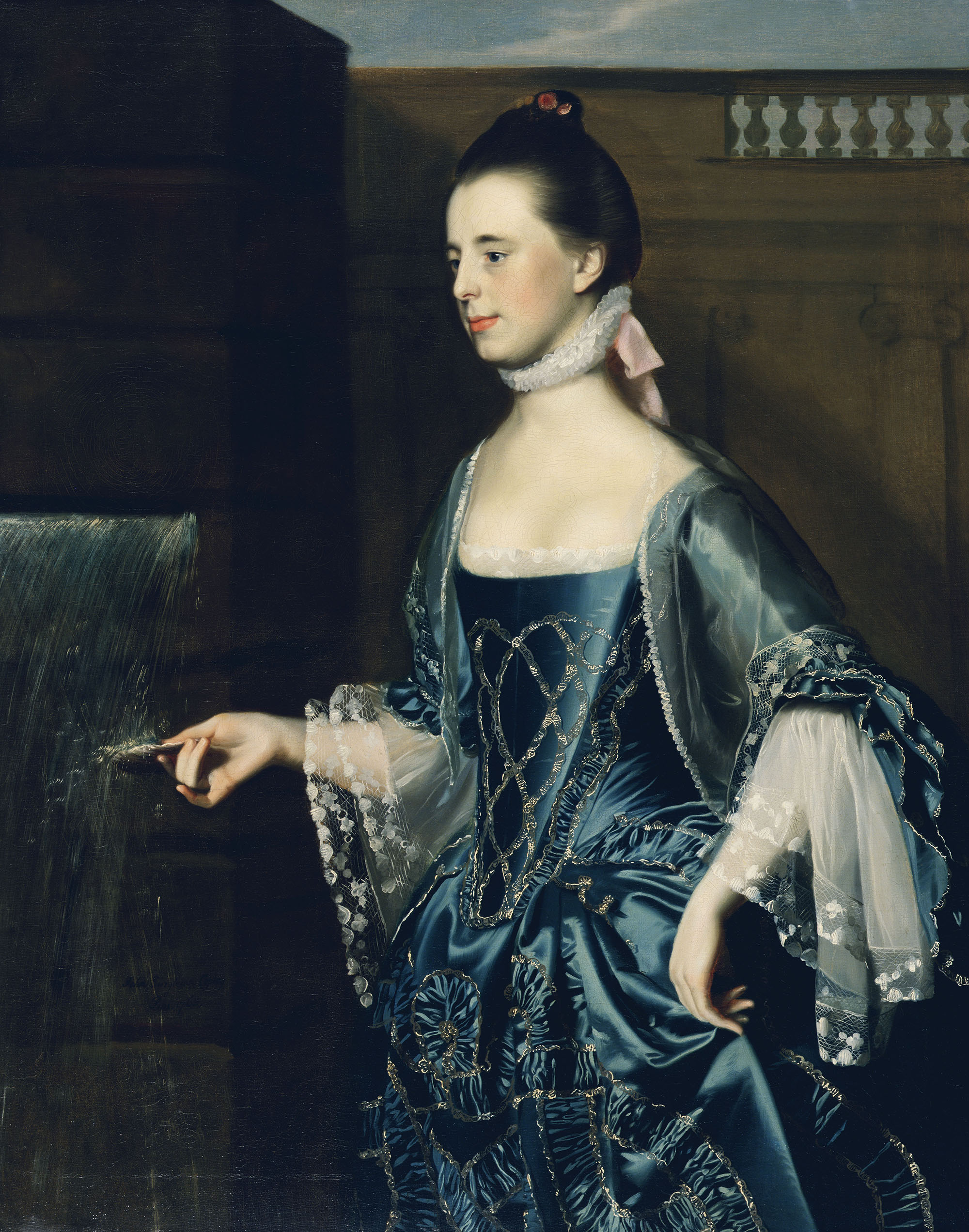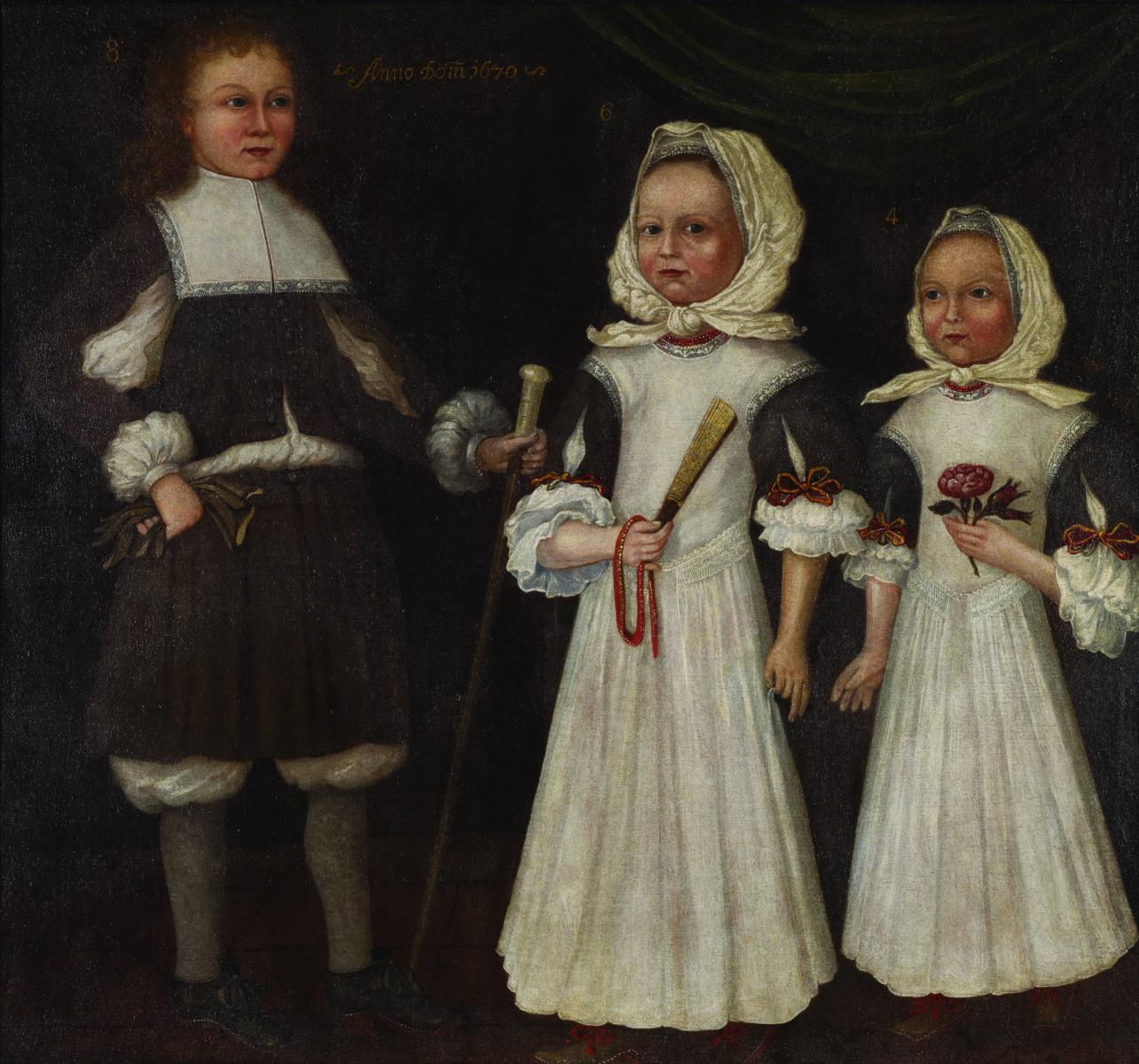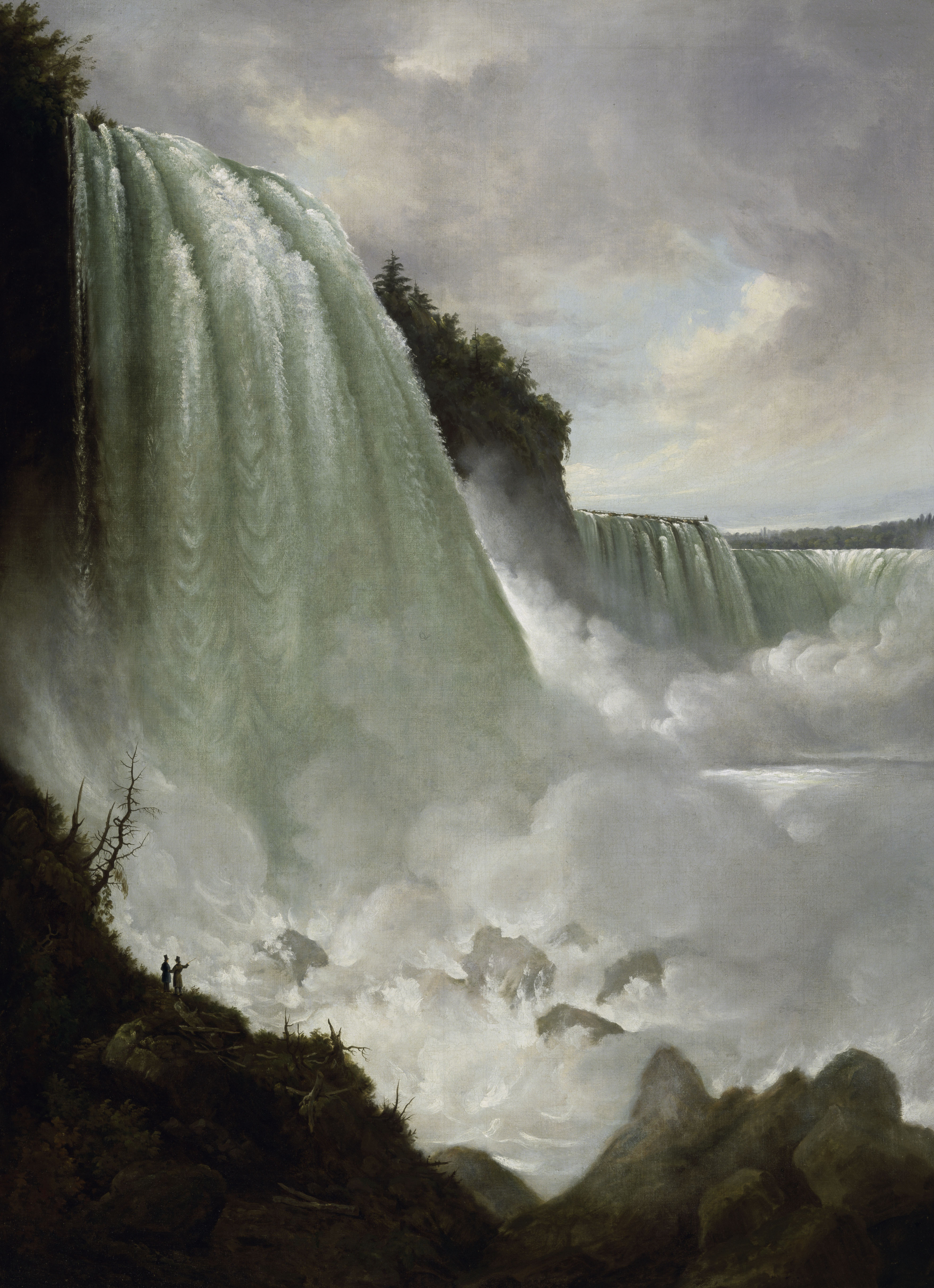Mrs. Daniel Sargent (Mary Turner)

What objects serve as symbols of your identity?
Mary Turner Sargent stands in front of a masonry wall next to a fountain, a sliver of sky visible above her head. With her left hand she delicately gathers the skirt of her dress, perhaps to keep it away from the splashing fountain. With her right hand she holds a scallop shell under the water. The shell was a conventional attribute of Venus, goddess of love and beauty, while water was symbolic of purity and fertility.



